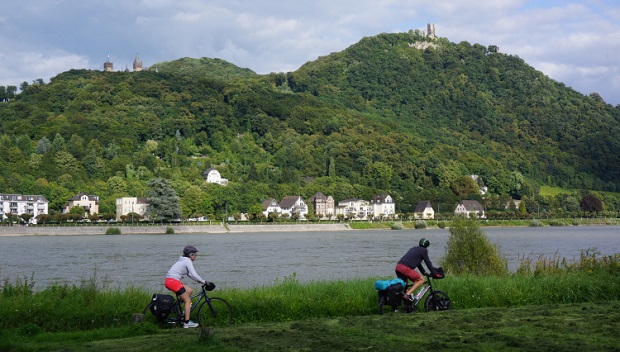by Tom Allen, Tomsbiketrip.com
There are a few aspects of buying a touring or any other bike of your choice, so utterly basic that they’re often lost in the quagmire of internet-based research. This is particularly the case when browsing websites for advice on features and technical specifications, rather than stopping into your local bike shop – were you will find it is lot easier to talk about the all-important intangibles of your future riding styles, than what you would ever find on the web.
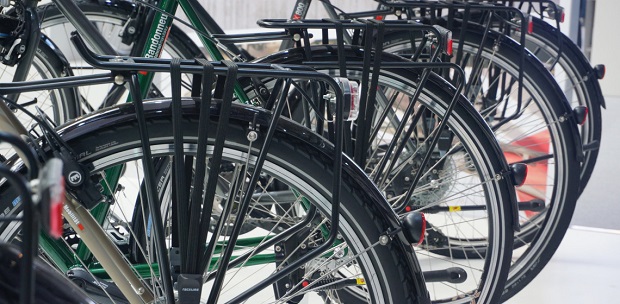
In this final Touring Bike FAQ article, we’ll look at a few of the key concerns for you: as a bicycle buyer, builder or tweaker that should always precede specification– or technology-based worries, particularly when it comes to handing over your hard-earned cash.
-
Does It Feel Right? (a.k.a. Go For A Test Ride)
By far the most important criteria for a bike you’re going to be riding all day, every day, is whether or not it feels right when you ride it.
This is something that months of theoretical research into touring bikes will never tell you and something that you’ll discover within a few seconds of actually trying one out.
For a short trip, if the bike you already own is comfortable enough, why change it? Even a bike that perhaps doesn’t feel perfect is still unlikely to cause problems for short, spontaneous, drop-everything-and-go trips. Assuming you haven’t forgotten to bring a multi-tool, you’ll be able to adjust various bits of the bike until it feels less uncomfortable. Miracles can be performed through saddle adjustment alone. Handlebars are easy to raise or lower.
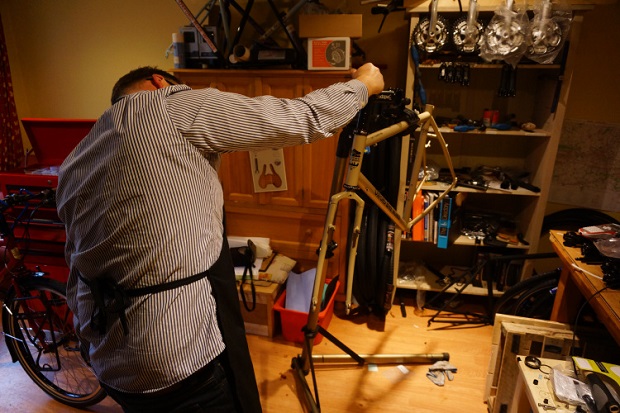
For anything longer, or involving any kind of significant time and money investment, you can’t afford to just order it on the web and discover it feels all wrong when it arrives by courier in a big cardboard box.
The most common cause of discomfort, when cycling for longer periods of time is to do with incorrect sizing. Unless you’re already an experienced cyclist who can hazard a guess as to the best of nine or ten size options, the easiest way to get this right is to get sized up at your local bike shop. You’ll be able to test-ride a variety of bikes and when you settle on buying one, they’ll be able to adjust or swap components that affect fit.
Depending on your budget, this is also a strong argument in favor of a custom-built touring bike.
The result? A touring bike that feels right. If you’re going to be spending the majority of your waking hours on it, there’s not much more important than that.
(What? You were thinking about buying a touring bike online without test-riding it first…?)
-
Does It Suit Your Touring Style? (a.k.a. Choose The Right Tool For The Job)
Not all touring bikes are built for the same kind of touring. That’s why, when choosing a bike, it’s really important to start by considering the demands of the trip you have in mind. Your ride should dictate your bike, rather than your bike dictating your ride.
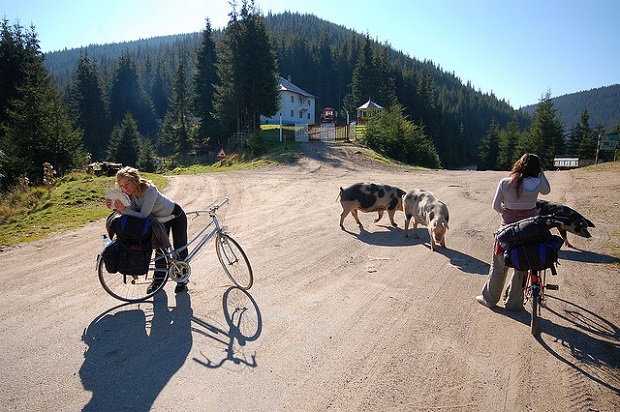
Fast, light, on-road and short-term is a combination usually found together in touring.
At the extreme end of this scale are ‘credit card tours’, in which the traveler packs little more than a toothbrush, a credit card and the clothes on their back and travels with the philosophy that they’ll buy what they need when circumstance demands it (including accommodation). The Himalayas have been crossed by bicycle in this way, though it might be worth starting out with something a little less ambitious.
Road and hybrid bikes with minimal luggage carrying abilities are fine for this kind of touring, and the niche is well served by the numerous light touring bikes on offer. Here, slow, heavy, rough-road and long-term are likely to coincide too.
Many years ago, on a deserted road in Egypt’s Sinai peninsula, I met Katya and Mirko, a Slovenian couple who truly did live on their bikes.
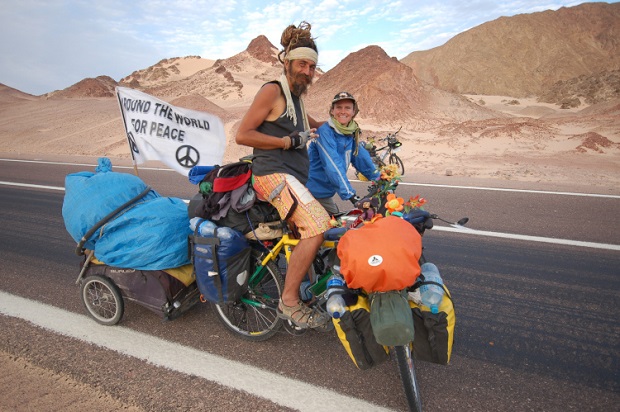
Their heavy-duty mountain bikes were piled high with luggage; a guitar sat atop a heap of jewelry-making equipment in a two-wheeled cargo trailer. From there, they would ride to Israel, where they would spend time making and selling jewelry in order to fund the next stage of their journey through life. At the time of writing they are riding through South-East Asia.
For those in it for the long haul, heavy-duty ‘expedition’ bikes are available, if not as commonly seen as your standard road tour bike. They’re built specifically to cater for the demands of fully-loaded world travel, and you’ll find they differ in a few very specific ways from ‘standard’ touring bikes.
Most tours fall somewhere in the middle.
You are not breaking records, but you do want to feel like you’ve got somewhere at the end of a day. You’ll carry the essentials for riding, camping and cooking in varying weather, but pack a few personal luxuries too. Roads will comprise the majority of your trip, but your might find yourself on a dirt track every now and then. Once on the road you will usually ride for a few weeks at a time. To prepare, make a few shorter trips closer to home first and occasionally go for some all-day rides to get in shape.
The majority of bikes sold as ‘touring bikes’ are designed to cater for this broad category of rider. If this is the first time you’ve been asked to think about your specialist touring requirements, it’s likely you fit this category and you’ll be pleased to hear that you’ve got bags of choices.
If a mainstream touring bike doesn’t fit your plans, consider a custom expedition build. You might also find inspiration in my personal bikeography, covering the bikes I’ve used myself over the last few years of touring.
For further questions about touring bikes and other applications, stop into your local bike shop for answers.


